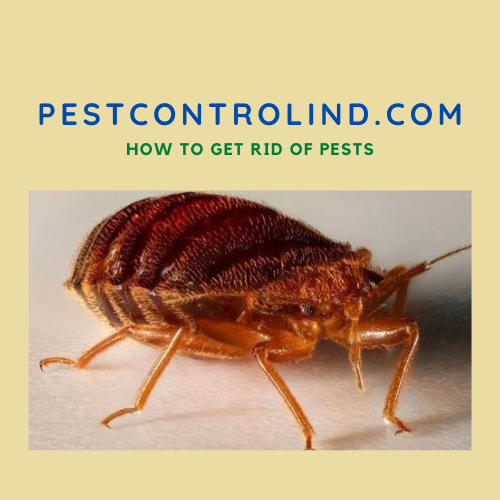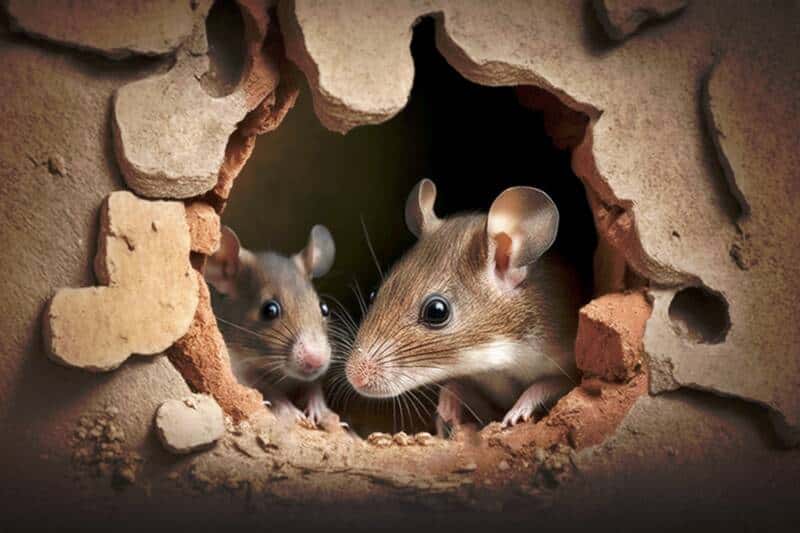Getting rid of rodents in the walls is a rather difficult thing at first glance. But those who know the nature and weaknesses of mice and rats know how to use them to drive them out of the walls where they often like to nest.
Here is a fairly consistent article to identify the problem of how to kill a rodent in a wall, which seems to be an impossible thing for the uninitiated.
I. How to know if there are rodents in the walls?
We are used to seeing in cartoons that mice hide inside walls by digging entrances. This is neither a myth nor an exaggeration, it is real, because wall cavities are privileged habitats for small rodents.
So if you are aware of mice or rats in your home, but don’t know where they are nesting, they may have built their nests in one of your walls.
To effectively fight these pests that hide there you must first become aware of their presence, to do this we present you with some signs:
# Seeing holes in the wall
Even the smallest holes can let mice through, so it is difficult to see them with the naked eye.
However, if you inspect the walls of your homes carefully, you may see these small openings, which will open your eyes to a possible rodent invasion.
The holes can be dug at the feet of the walls, just above the baseboards if you have them, and also in the ceilings which allow them to access the house.
In fact, if you have any doubt about an invasion, you should check the walls thoroughly from top to bottom and from one end to the other.
# Hearing rodent noises in the walls
Because mice are very small creatures, it is not only difficult to see them but also to hear them.
However, it is possible that when there is total silence, their movements or cries can be heard.
Whether it is during the day or late at night, when you are close to a wall you can hear scratching or high-pitched screams, which can warn you about the possible presence of rodents.
II. How to get rodents out of the walls?
In order to kill mice and rats or capture them, they must first come out of their holes. You can wait for them to come out on their own, which usually happens at night, or you can speed things up and get them to come out of their tunnels using methods that we will explain to you.
# Use repellents
First of all, you need to do a visual inspection and identify where the holes are that can lead to the rodents’ nests, which are usually located at the bottom of the walls.
Once you have located them, you will put repellents such as mint or pepper at the entrance of these openings.
And if possible have them injected inside the holes. When the smell of these substances reaches the fine sense of smell of the mice hiding there, they will have no choice but to flee.
They will be forced to leave their nests and head for the holes’ exits.
# Use bait
When mice are in their nests, they are safe and the only reason they venture out is to eat.
But she doesn’t satisfy this need until late at night when everyone is asleep and it’s quiet.
In order to attract the mouse or rat during the day and make it come out of its shelter, it is necessary to excite it with bait.
The principle is to bring this attractant as close as possible to the holes leading to the nest. When the rodent smells the food, it will not hesitate to go out and get it.

III. How to get rid of rodents in the walls?
When you know that a rodent is in a wall, before you take it out, it is rather logical to prepare a mousetrap beforehand that will surprise it.
Because small rodents are very fast animals, once outside they retrieve their food and slip away in a flash.
There are a lot of traps that you can buy or make at home that you can use to capture these pests, I present to you the most known ones:
# Killing mice with a mouse swatter
The mouse swatter is a cliché that comes back to us every time there is a subject of a trap for rodents, it is one of the oldest and relatively the most effective that has remained so modern.
Its principle is elementary, like any other mousetrap, we fix a bait that will attract the victim.
When the latter tries to detach its food an iron bar closes in on it and kills it instantly.
# Trapping a rodent in a trap
This is also a very old concept but has been modernized and improved over time. It’s a trap that allows us to catch rodents alive so it’s very useful for those who are sensitive to the animal cause.
It is a cube in which we put food that will attract the rodent inside, once this one is inside the door of the box or the cage closes and the animal remains stuck inside.
We will be able to bring it far from home, in the forest to free it.
# Catching a mouse with the glue trap
The glue trap is a sticky plate that we design at home or that we buy to trap rodents.
A food item is placed in the middle of its surface. When one of the animals sets foot on the plate, it remains stuck until it dies.
Depending on the surface of the glue, several animals can be trapped at the same time.
The only disadvantage of this glue trap is that it kills the rodent slowly and can make it suffer. The only drawback is that it kills the rodent slowly and can cause it to suffer, as the little beast dies of exhaustion while trying to free itself from the glue.
# Killing mice with rat poison
Rat poison is a poison that causes the rodent’s blood to clot when it consumes it.
It is usually in the form of aromatic blocks, pastes, and powders that are placed in infested areas.
When a rat or mouse swallows a rat’s poison, it dies after a few days.
IV. Preventing rodents
Why wait for an invasion of rodents to start fighting them? It is possible and necessary to set up a prevention system against them because no one is safe from this kind of unwanted visit.
Here are some instructions to follow to avoid being infested by mice and rats:
- Clean up the area around your house
- Prune the vegetation in your garden and remove climbing plants
- Always clean your house of food scraps and wash it with bleach
- Equip your home with natural pest repellents
- Set up mouse traps in places that are usually invaded by mice

